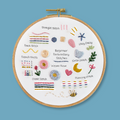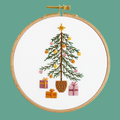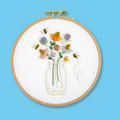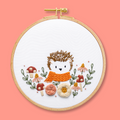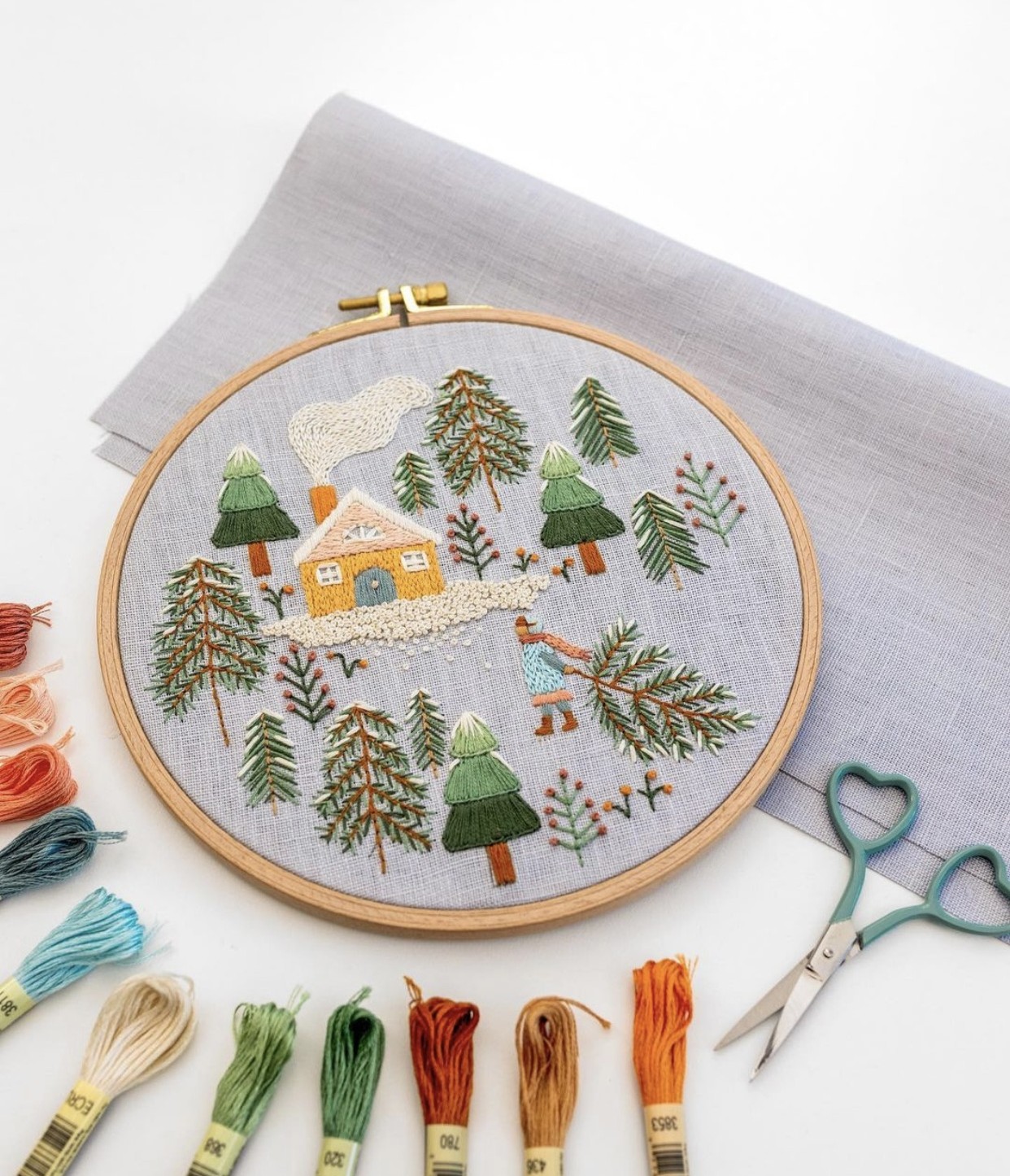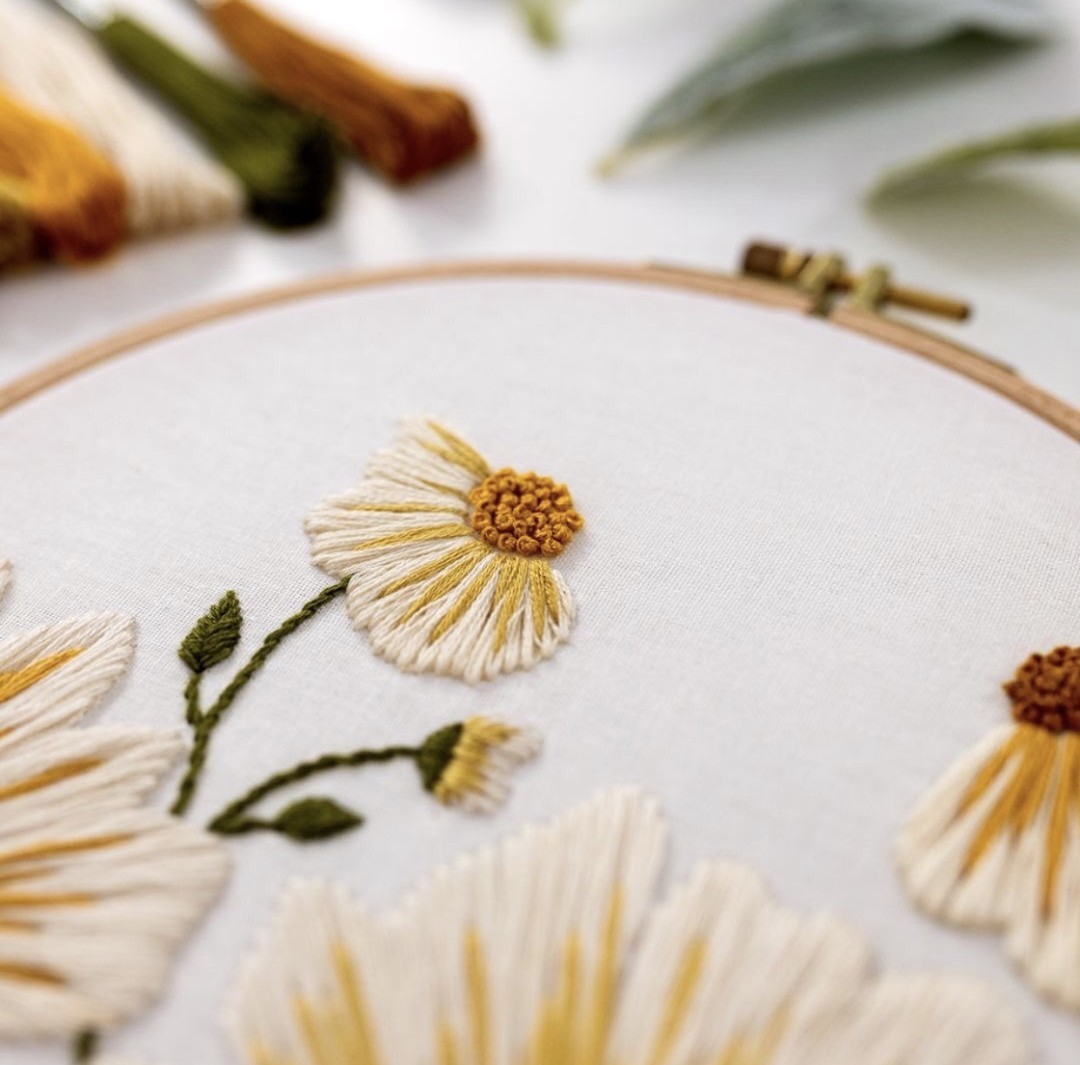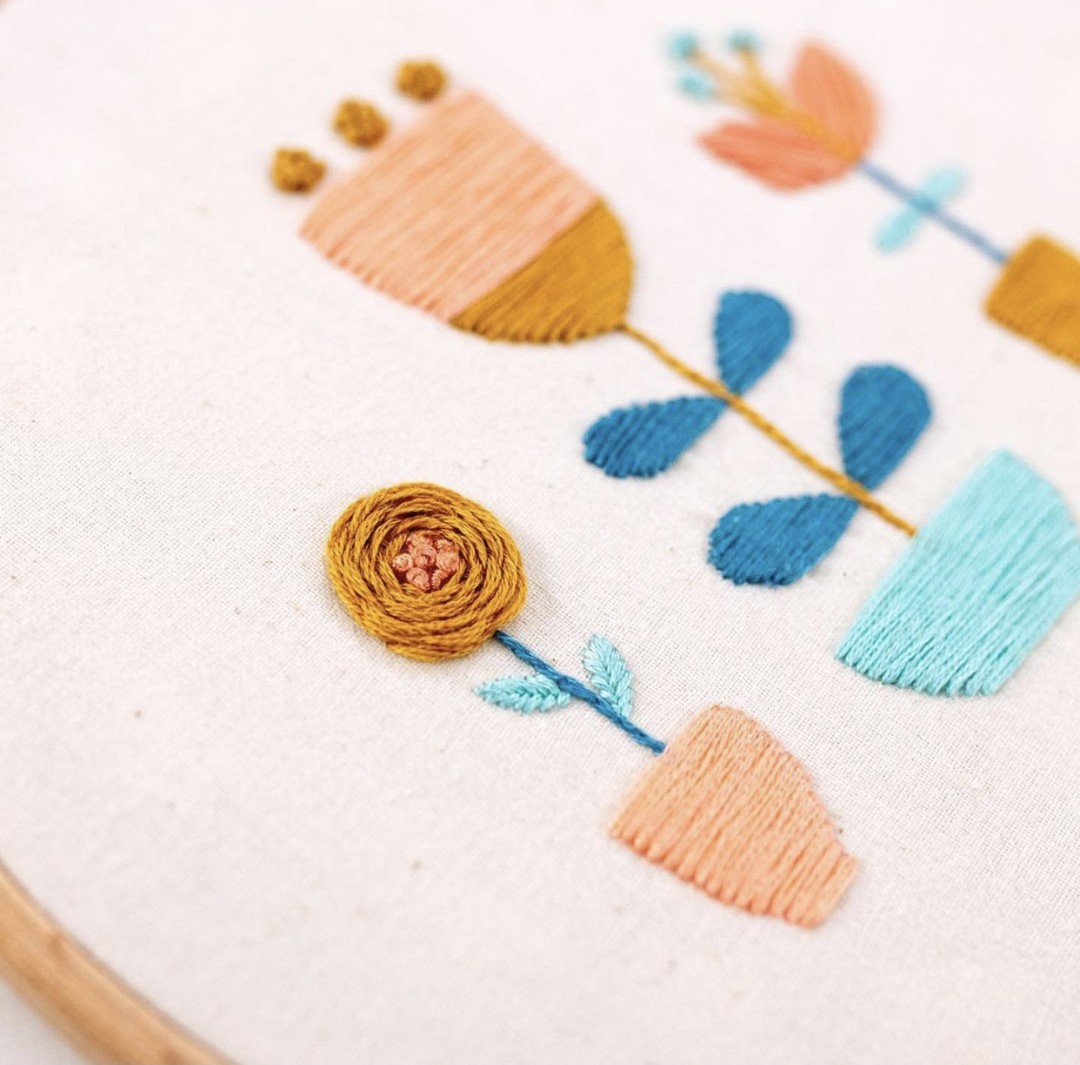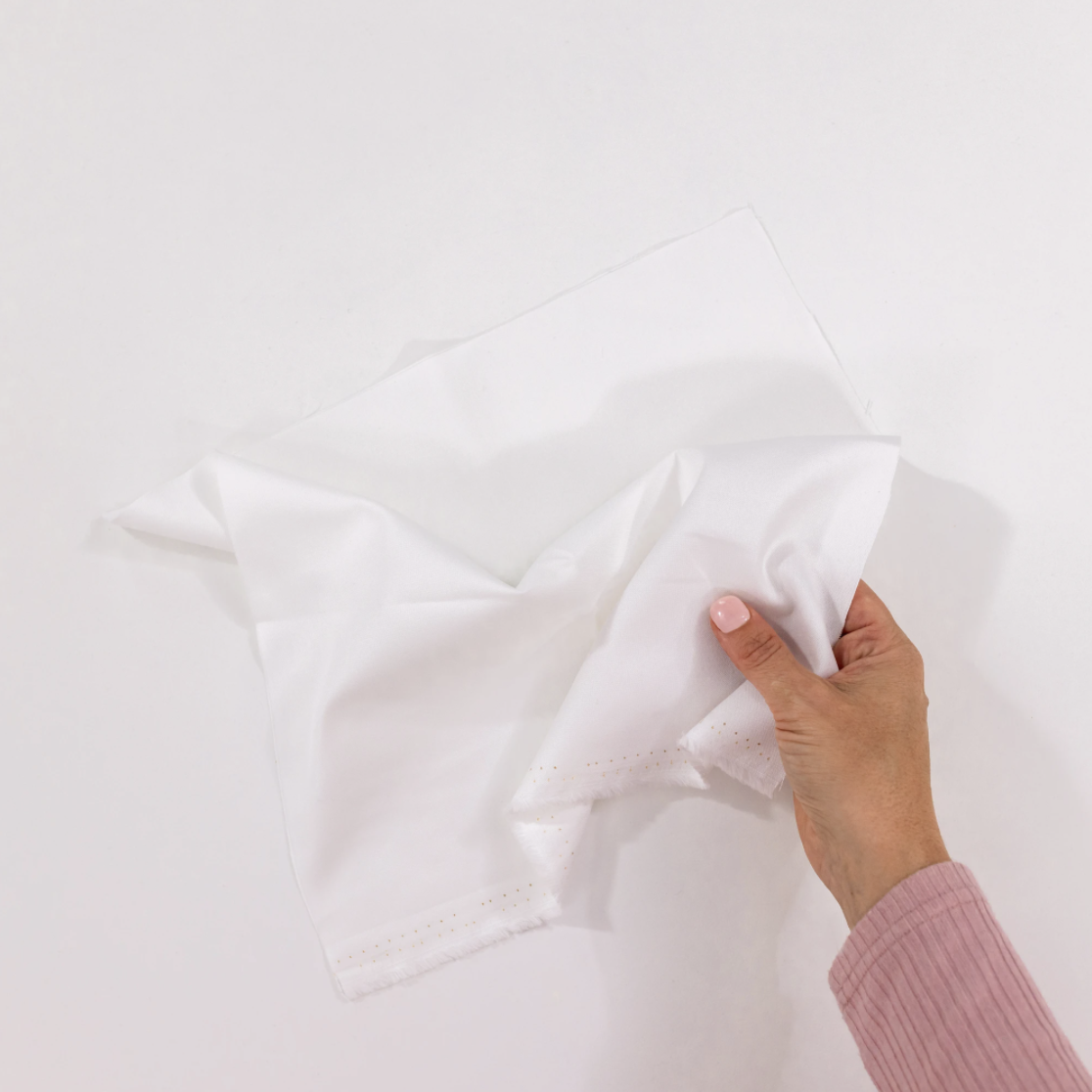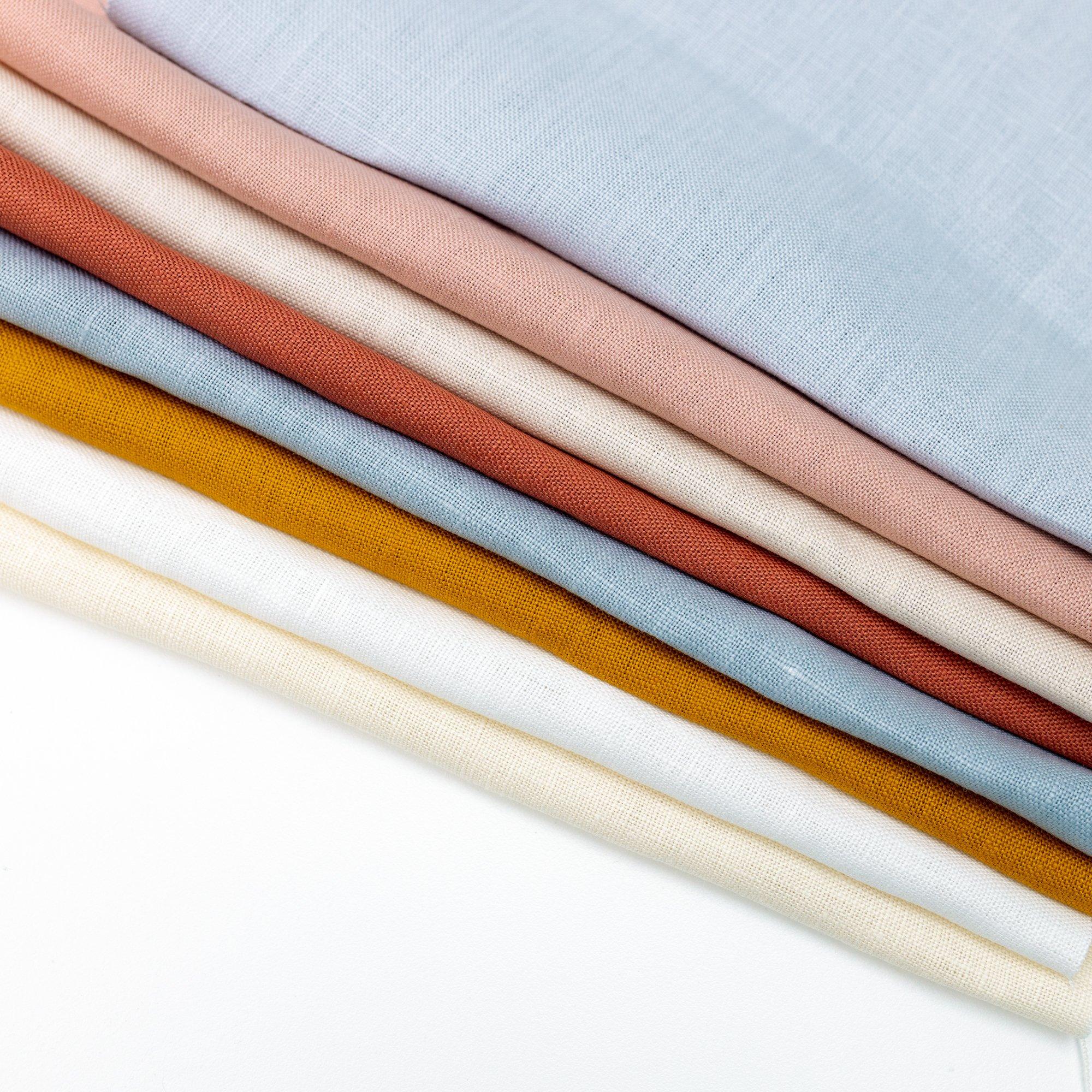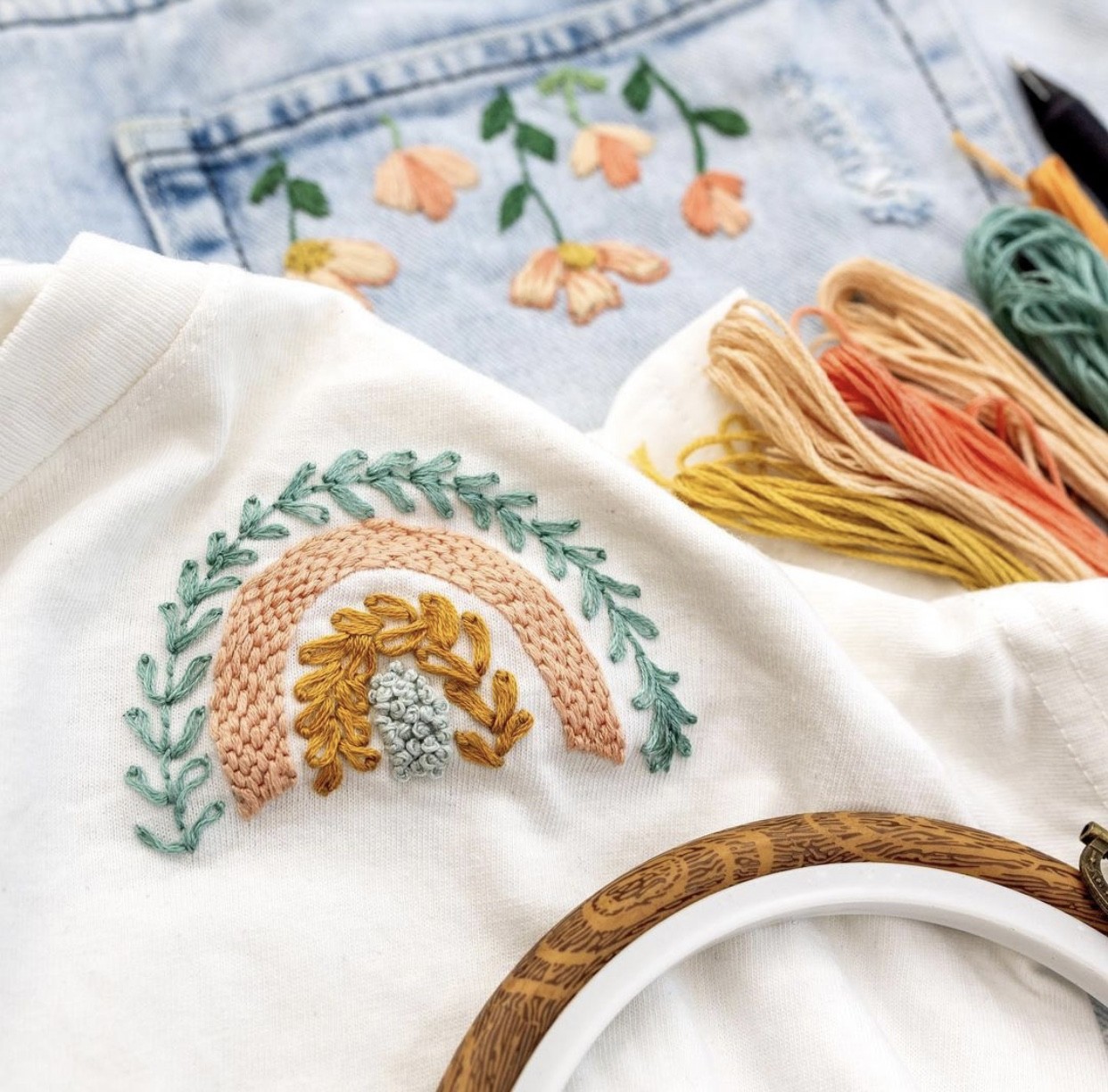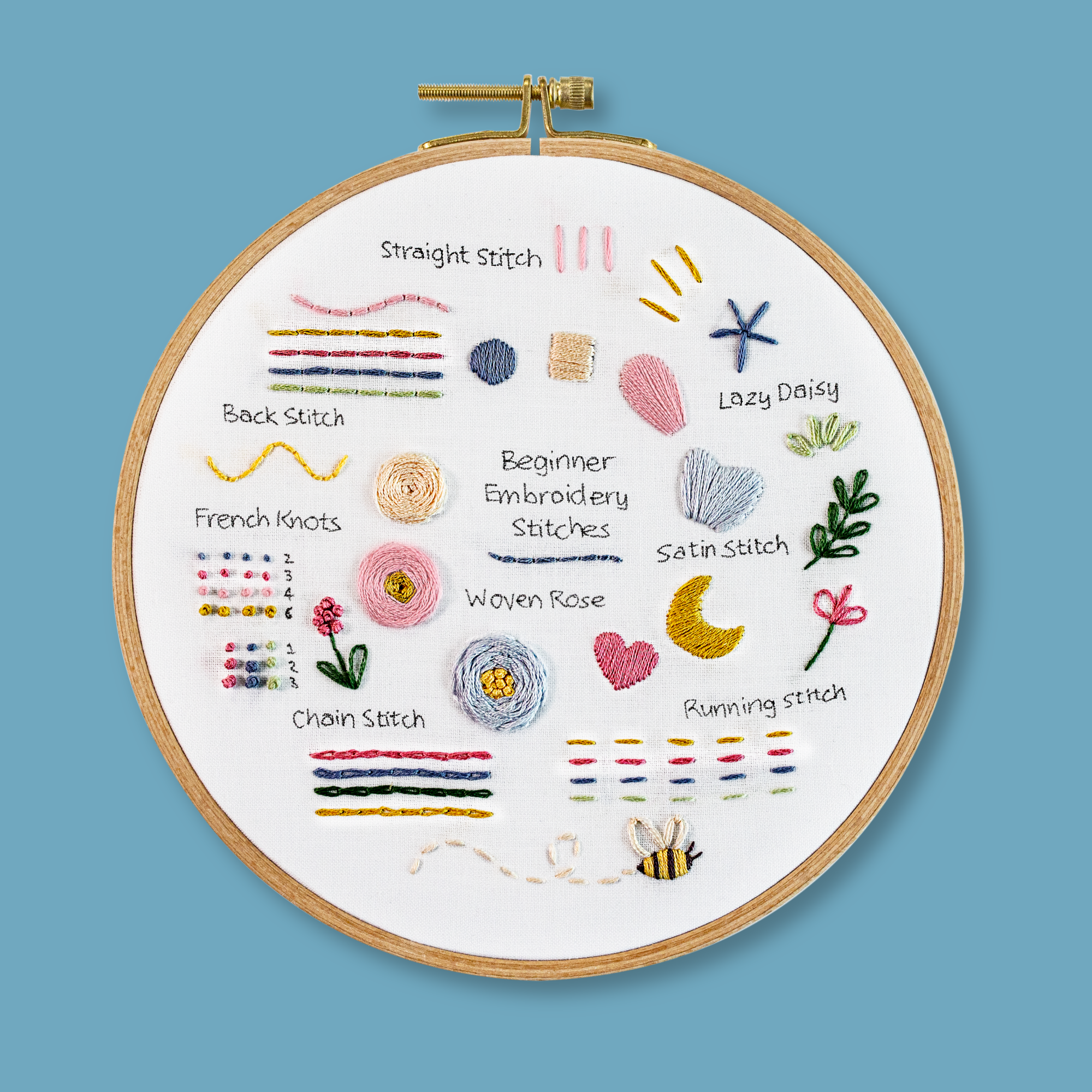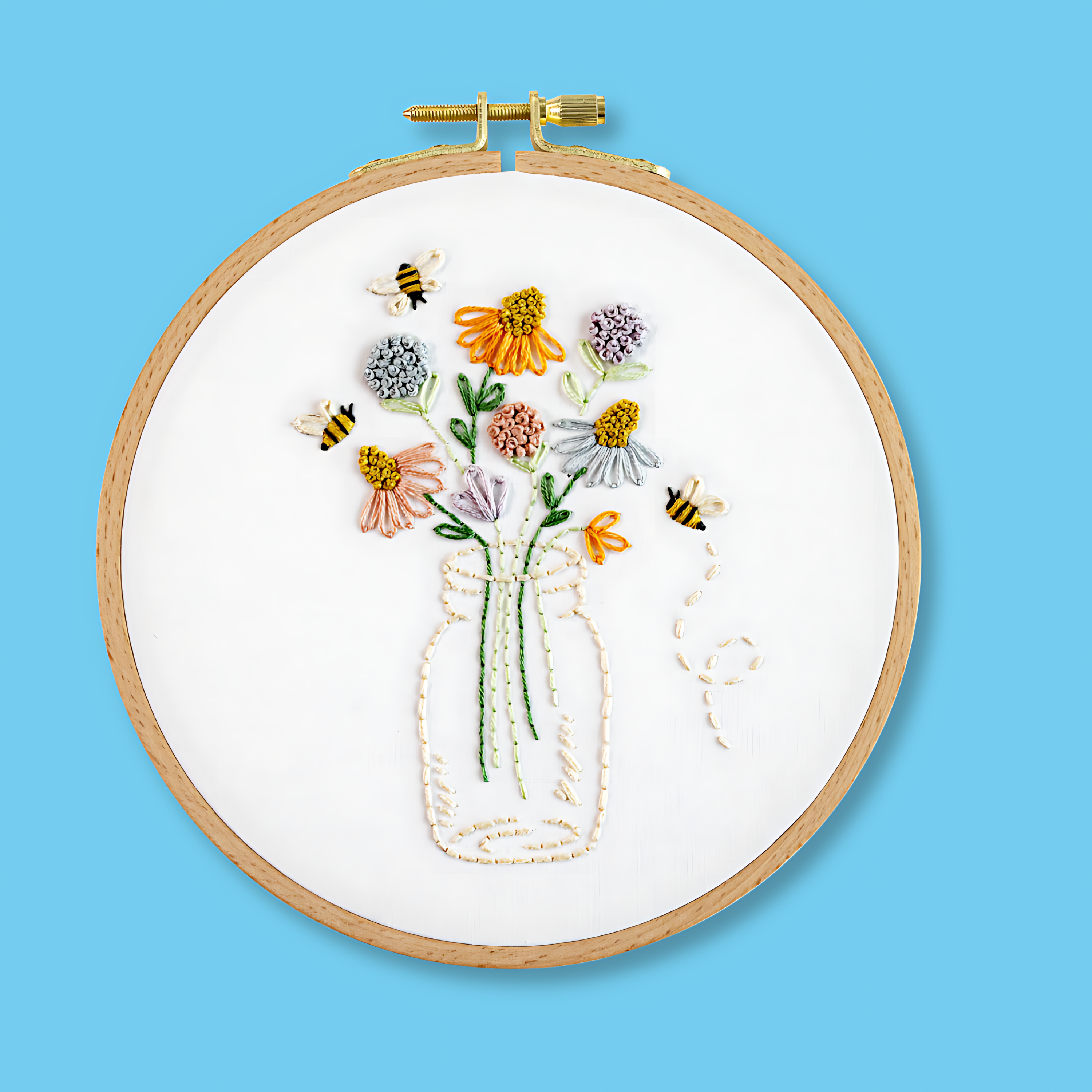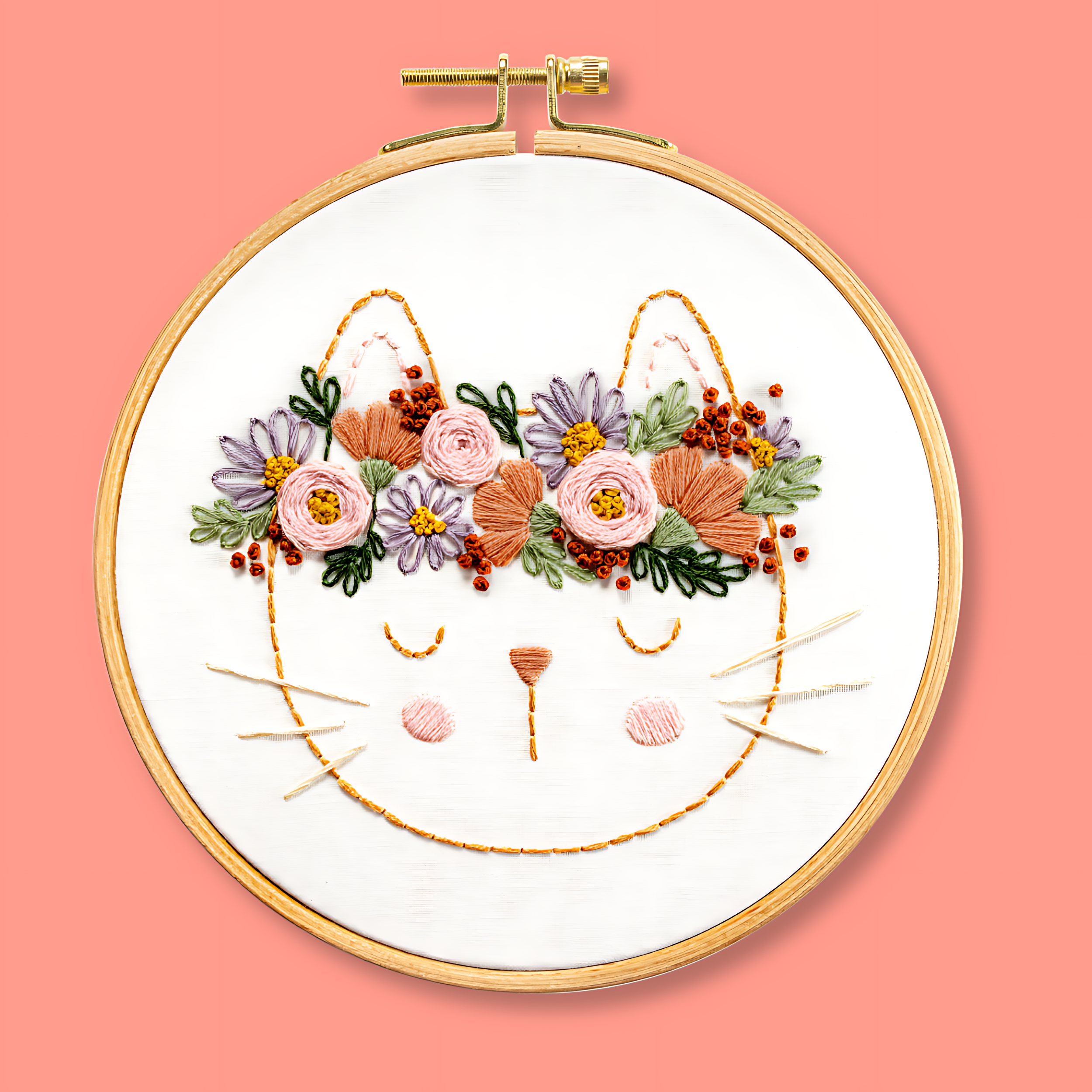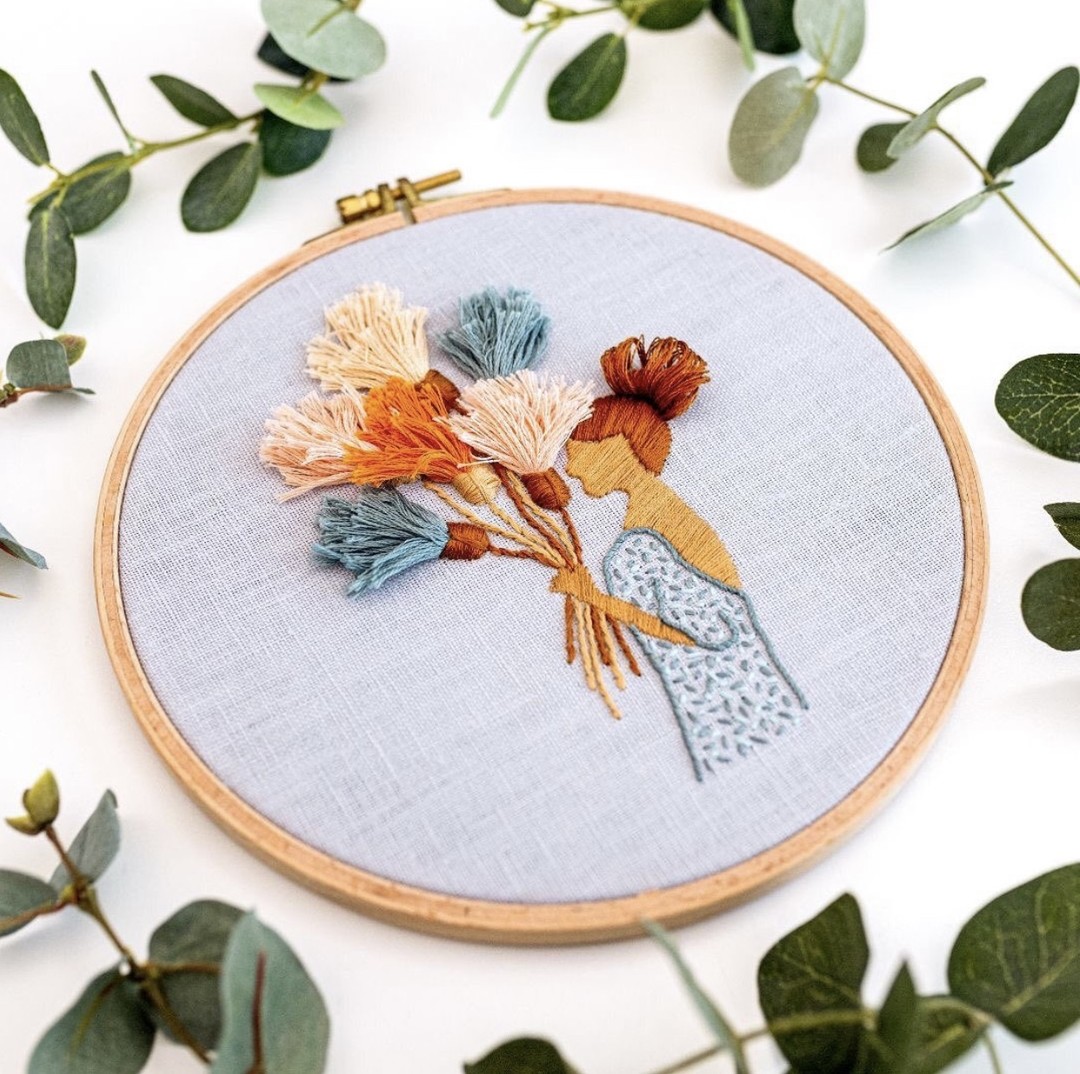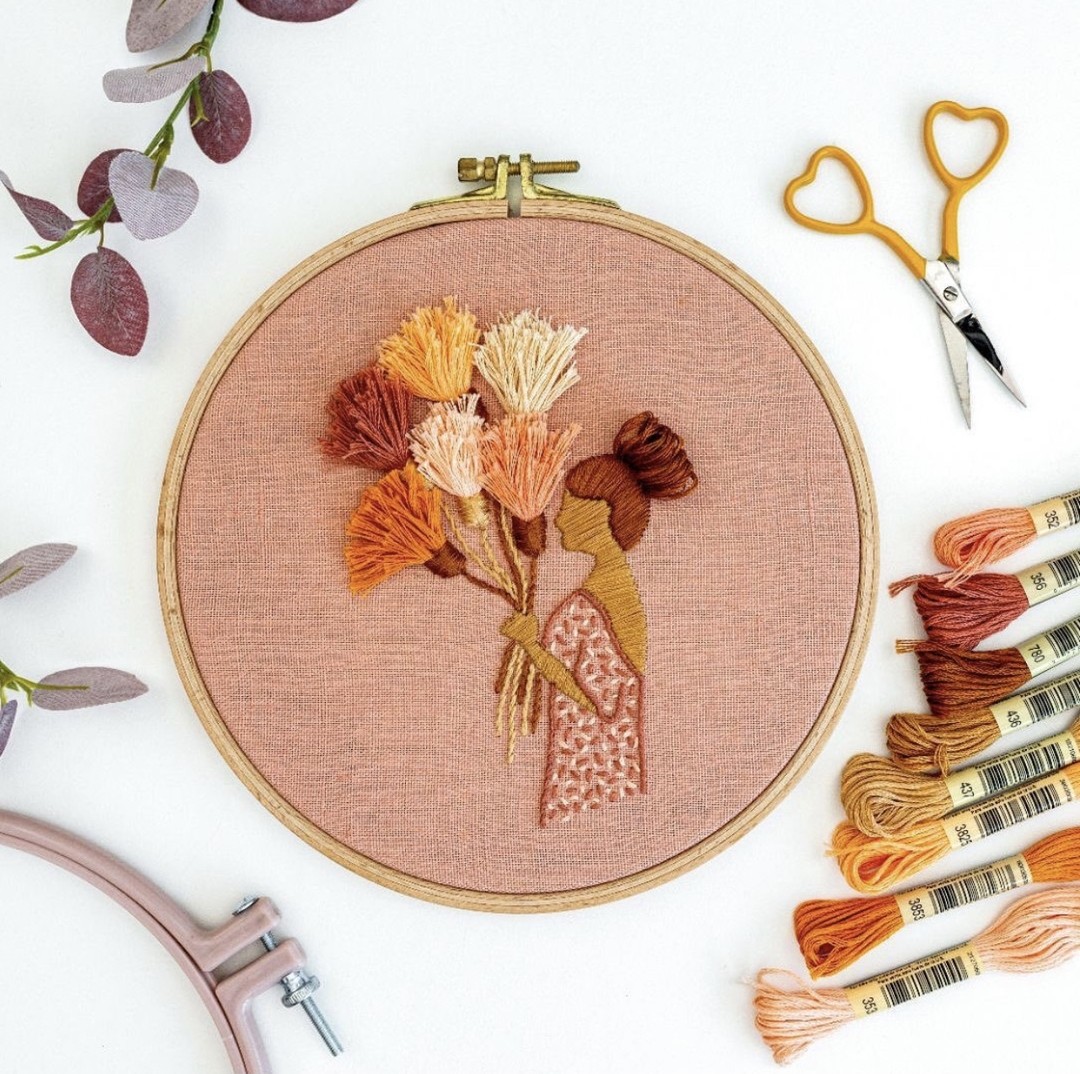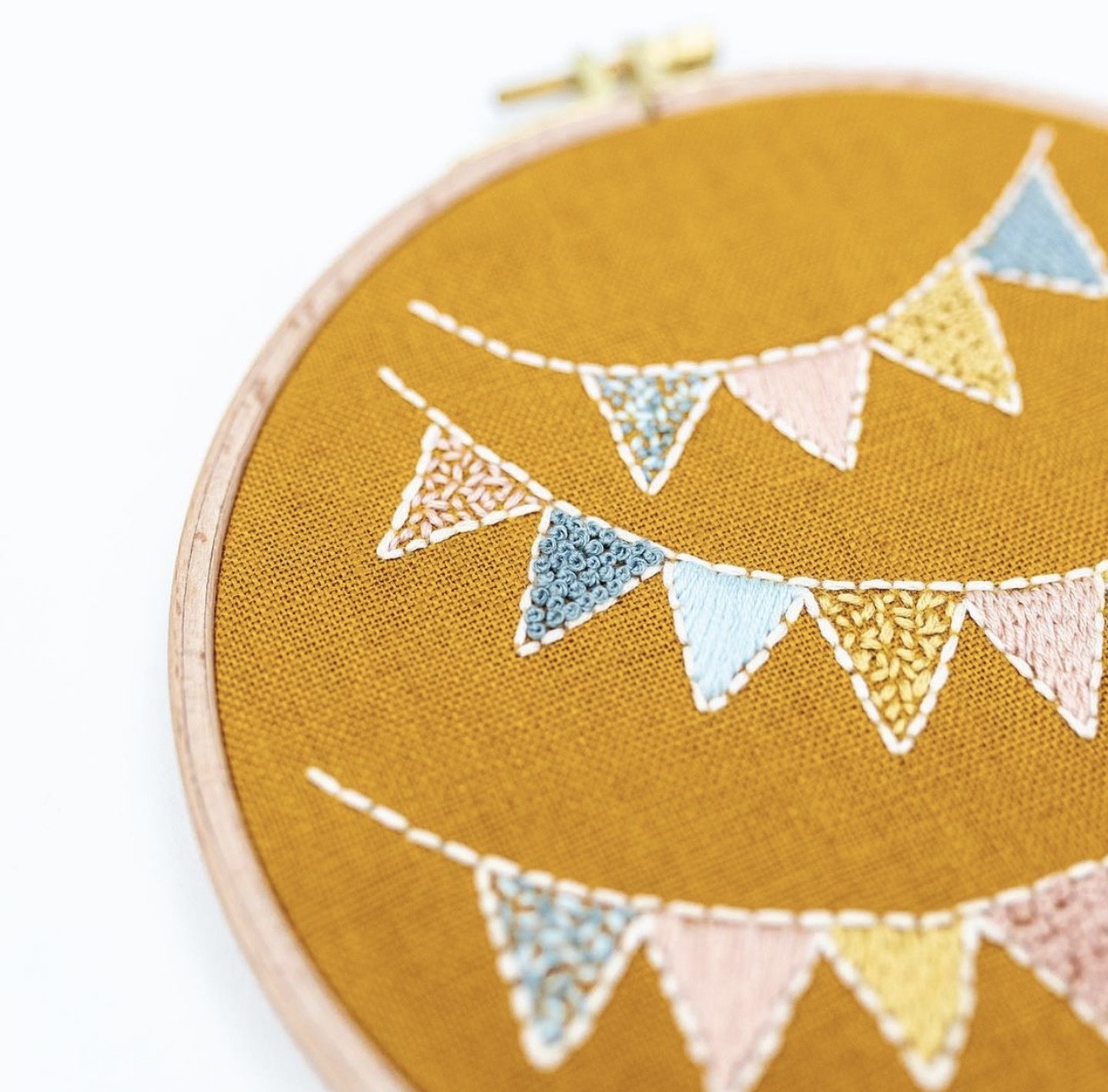A Beginner Guide to the Best Modern Embroidery Fabrics
Introduction
I know what it’s like to start out in the world of modern embroidery, it can be so overwhelming with all the different info online telling you conflicting things. And it’s tricky to understand the industry lingo and technical terms that are bandied about!
I’ll let you in on a secret, the right embroidery fabric can really make a huge difference to the outcome of your embroidery creations (especially as a beginner).
This is because the right embroidery fabric will make it much easier for you to stitch along and get the hang of this amazing craft!
I want to make things easy for you, by just giving you all the essential information that you need to know (versus the nice to know), so you can get started on the fun part, stitching.
So let’s get started on my top picks of modern embroidery fabrics for beginners!
100% Cotton
I think the best place to start is with plain 100% cotton. Keep it simple my friend!
Woven cotton generally has a nice, tight, and even weave (think of a smooth and clean surface), which makes it a great option to embroider upon.
In my opinion, this is the best fabric to learn on. Then once you get a little more confident with your embroidery skills, you can experiment with the other beginner-friendly fabrics I cover in this article, including linen and denim.
What type of Cotton should you look for?
Look for a ‘quilting’ quality cotton, which will be the perfect thickness for you to get started with. I like to use medium-weight cotton. This cotton is firm enough to hold well (you don’t want something too flimsy and sheer), but it’s not so thick and tightly woven that you will struggle to push your needle through.
A standard quilter's cotton means you should be able to pull your needle through easily with each stitch.
If you’re wondering about weight, you can look for about 130 -190 gsm. But don’t get too caught up in this figure, because it’s often not even mentioned in the fabric descriptions.
Another term often used to describe plain cotton fabric is ‘Calico’. In my experience, this is usually slightly more coarse than Quilter's Cotton, but is still a great option for beginners (you might actually struggle to tell the difference)!
Colour
100% cotton comes in a large range of colours and designs. This is a lot of fun to experiment with, once you become confident with choosing colour combos.
But when you’re starting out, I would suggest choosing plain white cotton, so that your colours really pop out against the white. But I also love the more natural or ‘seeded’ look, for a result that’s a bit more earthy.
Price
The good news is that plain 100% cotton is a relatively affordable embroidery fabric to buy. Especially when you compare it to linen or specialist embroidery cloth.
Alternatively, you could always repurpose any plain cotton you have at home - like an old pillowcase that you’re happy to cut into pieces for embroidery.
How easy is it to buy?
Another reason I love 100% cotton is that it’s so easy and accessible to buy! You will be able to find many different kinds of cotton in your local craft store (e.g. Spotlight for those of us in Australasia).
We also sell 100% cotton in our Clever Poppy store! And it’s been tried and tested by me, so you know it’s fantastic to stitch on.
If you’re hunting down this fabric in your local craft store, you can usually buy it one of 2 ways:
1. As pre-cut pieces, which are often called a ‘fat quarter’. A Fat Quarter is usually around 50cm x 55cm in size.
2. Or you can choose to buy a piece that is cut off the roll. Rolls will have an overall width, that is determined by how wide the fabric is (e.g. 1.2 metres wide).
When you ask to purchase some, you nominate how much of the roll you would like cut off. So for example, if you say ‘half a metre’, you will be cut a piece that is 50cm x 1.2m. So always check how wide the fabric is before you decide how much to cut off.
Linen
I absolutely love stitching on linen and the look of embroidery on this beautiful natural fibre.
Linen naturally has more texture and inconsistency within its weave, so this means that as a beginner, you may find this fabric a bit more difficult to stitch on than plain cotton. But it really is a lovely fabric to use for modern embroidery and it softens beautifully over time.
I think it’s well worth experimenting with linen, once you’ve become a little bit more confident with your embroidery skills.
What kind of linen should I look for?
Linen does vary a lot in terms of its weight and how tight the weave is.
You want to look for linen that has a reasonably tight and even weave. This means it will be easier to stitch upon, compared to loosely woven linen (which easily pulls apart with your stitches).
My personal favourite is heavy-weight linen that’s about 260gsm. But I have another type that I enjoy, which is about 160gsm.
Colours
Similar to cotton, Linen also comes in every colour you could possibly imagine!
Price
Linen is generally more expensive than cotton. But it’s probably still more affordable than specialty embroidery cloth.
How easy is it to buy?
Like cotton, this material is also super accessible! You should be able to find lovely plain linen colours at your local craft or sewing store.
Fabric Blends
As the name suggests, blends are a mixture of two different types of fabric fibres.
Most embroidery experts would suggest that you focus on natural fibres, and avoid synthetic blends and/or natural + synthetic blends.
This is because synthetic blends can be harder on the thread fibres, are more difficult to work with, and you can never be certain how successful your embroidery creation will turn out.
So if you are wanting to try a fabric blend, I’d suggest you experiment with fabrics that are a blend of cotton and linen.
Colours
Fabric blends come in many different colours, and so does the linen/cotton blend that I suggested (if you were going to stitch using a fabric blend).
Price
The price of your fabric will depend on the type of fabric blend, so they come in a range of prices.
Generally blends with cotton will be cheaper but fabric blends are still relatively affordable.
How easy is it to buy?
This material is also super accessible to buy!
Denim
Denim is a fantastic and very forgiving fabric option for modern embroidery.
This fabric is made from cotton, however, in the embroidery world, it's pretty much treated as its own class of fabric, because of its unique heavyweight and strong texture.
I would recommend you get confident with doing embroidery on plain cotton first, then you can start experimenting with denim. Wearing your embroidery art is such a fun way to show off your embroidery skills to everybody!
Embroidering on clothing is also a great way to hide those pesky stains and holes that may begin to rear their ugly heads during your clothing’s lifetime.
Colour
As you’ll be aware, there are many shades and colours of denim available in the clothing world. You can stitch on whatever colour you enjoy, but I personally like the lighter coloured denim as I think it makes my stitches stand out more.
Price
Denim is generally more expensive than cotton but might be a bit cheaper than pure linen. But it’s generally still more affordable than specialty embroidery cloth.
A great option (to upcycle fabric and save you money) is to embroider on an upcycled piece of denim clothing that has been hanging out unworn in the back of your wardrobe for the past few years.
How easy is it to buy?
Denim is super accessible to buy, and you should most likely be able to find it at your local fabric store.
Fabrics You Should Avoid Stitching With as a Beginner
So now we’ve covered the embroidery fabrics that are my top picks for beginners to use, let’s go over some fabrics that are not so beginner-friendly.
Educational embroidery site Pumora suggests that as a beginner, you should avoid stitching with the following fabrics:
- Satin and other shiny, smooth fabrics
- Stretchy fabrics such as jersey
- Fabrics such as velvet, fleece, and corduroy
- Thin, transparent fabrics including gauze
These fabrics are much more difficult to stitch on because of their textures and weaves. For this reason, I have totally avoided them in my embroidery journey.
Conclusion
I would definitely recommend that you stick with 100% cotton (look for a ‘Quilters’ quality cotton), as the first material you use for your modern embroidery creations, as this is the most beginner-friendly option.
Then, once you feel confident using this fabric, you can start testing other fabrics such as linen, cotton blends, and maybe even sprucing up some denim clothing!
Plus, once you reach this stage, you should also feel confident trying out different coloured fabrics to suit your colour palette (this is so much fun).
As for stores to buy your supplies from, I sell my favourite supplies (tried and tested by me) in our store - the Clever Poppy Shop. We ship worldwide with DHL who are so speedy and reliable!
What's next?
Our beginner embroidery kits are a favourite among new stitchers for their simple, step-by-step instructions and beautiful designs that make learning easy and fun. Whether you’ve been wanting to learn embroidery or are just searching for your next creative hobby. These kits are the perfect introduction to embroidery.
Why people love our beginner kits:
-
Everything you need is included: fabric, thread, hoop, and more!
-
Clear instructions to guide you every step of the way.
-
Gorgeous designs you’ll be proud to display.
Our most popular beginner kits

